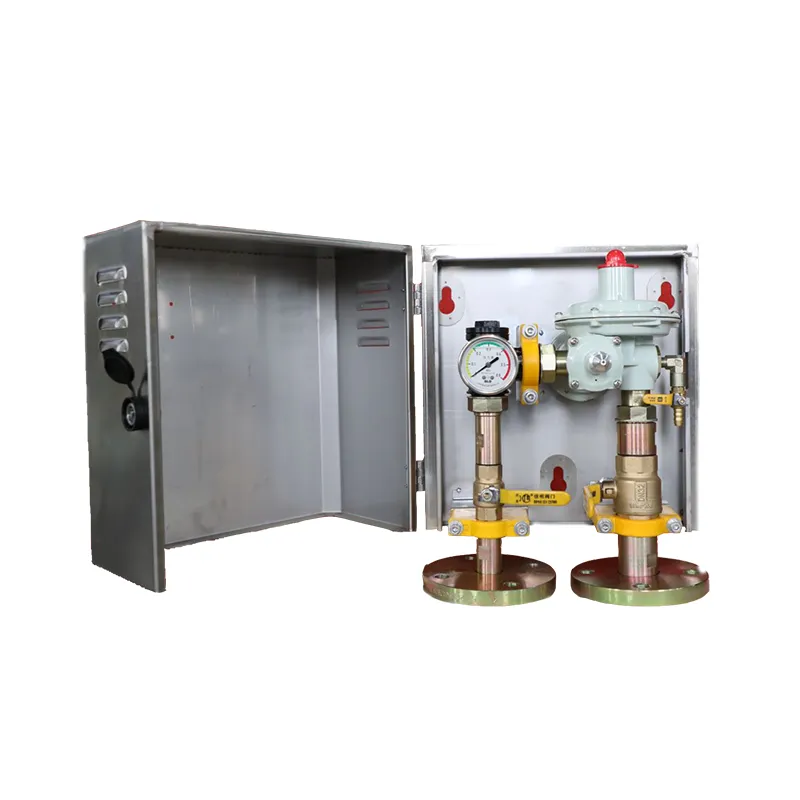
Dec . 01, 2024 15:42
Back to list
Natural Gas Pressure Regulation Valve for Efficient Flow Control and Safety Management
Understanding Natural Gas Pressure Reducing Valves
Natural gas is a vital energy source that powers homes, businesses, and industries globally. As gas moves through pipelines to reach customers, it travels at high pressures. To ensure safe and efficient usage, natural gas must be reduced to a lower pressure before it enters homes or commercial buildings. This is where natural gas pressure reducing valves (PRVs) play a critical role.
A natural gas pressure reducing valve is a mechanical device that regulates and controls the pressure of gas as it flows from high-pressure areas to lower-pressure areas. Typically installed in gas distribution systems, these valves are designed to automatically adjust the flow to maintain a constant outlet pressure, regardless of variations in the inlet pressure. This ensures that the gas delivered to end-users is at a safe and usable pressure.
How PRVs Work
The operation of a pressure reducing valve is quite straightforward but relies on well-engineered components. The valve consists of a casing, a spring-loaded diaphragm, and an adjustable spring mechanism. As high-pressure gas enters the valve, it exerts force on the diaphragm. This pressure pushes the diaphragm upwards, allowing gas to flow through a defined pathway to the outlet.
As gas escapes the valve, the pressure decreases. When the outlet pressure reaches a pre-set level, the diaphragm begins to close, reducing the flow of gas and stabilizing the output pressure. The spring can be adjusted to set the desired outlet pressure, which provides flexibility to accommodate varying demands in usage.
Importance of PRVs in Safety and Efficiency
The role of pressure reducing valves goes beyond mere regulation of pressure. They are crucial for safety in natural gas distribution systems. High pressure can lead to gas leaks, explosions, and fires, posing severe risks to life and property. By maintaining an appropriate pressure level, PRVs help prevent these dangers and ensure compliance with safety regulations.
Moreover, pressure reducing valves improve the efficiency of gas usage. By providing a consistent gas supply pressure, they enable appliances and heating systems to operate optimally. This not only enhances performance but also minimizes energy consumption, leading to cost savings for consumers.
natural gas pressure reducing valve

Types of Natural Gas Pressure Reducing Valves
There are several types of pressure reducing valves engineered for specific applications
. Some common types include1. Spring-loaded PRVs These are the most common type, using a spring to maintain the diaphragm position and regulate pressure.
2. Direct-operated PRVs These involve a direct relationship between the inlet and outlet pressures, ideal for low-pressure applications.
3. Pilot-operated PRVs More complex, these valves utilize a pilot system to control the main valve, suitable for higher pressure scenarios and providing greater accuracy.
4. Safety relief valves These are designed to release pressure when it exceeds a pre-set level, offering additional protection against over-pressure situations.
Installation and Maintenance
Proper installation and routine maintenance of natural gas pressure reducing valves are essential for reliable operation. They should be installed by qualified professionals to ensure compliance with local codes and standards. Regular checks for leaks, wear, and tear on components should be conducted to maintain safe and efficient operation.
In conclusion, natural gas pressure reducing valves are integral components of modern gas distribution systems. They ensure safe and consistent delivery of gas at pressures suitable for residential and commercial use. By facilitating safe operation and enhancing efficiency, PRVs play a key role in how we utilize natural gas in our daily lives. Understanding their function and importance can help consumers appreciate the engineering behind the gas systems that power their homes and businesses.
Latest news
-
Safety Valve Spring-Loaded Design Overpressure ProtectionNewsJul.25,2025
-
Precision Voltage Regulator AC5 Accuracy Grade PerformanceNewsJul.25,2025
-
Natural Gas Pressure Regulating Skid Industrial Pipeline ApplicationsNewsJul.25,2025
-
Natural Gas Filter Stainless Steel Mesh Element DesignNewsJul.25,2025
-
Gas Pressure Regulator Valve Direct-Acting Spring-Loaded DesignNewsJul.25,2025
-
Decompression Equipment Multi-Stage Heat Exchange System DesignNewsJul.25,2025

